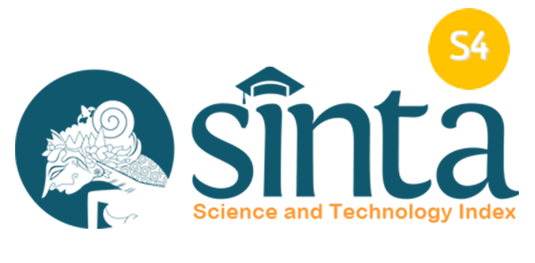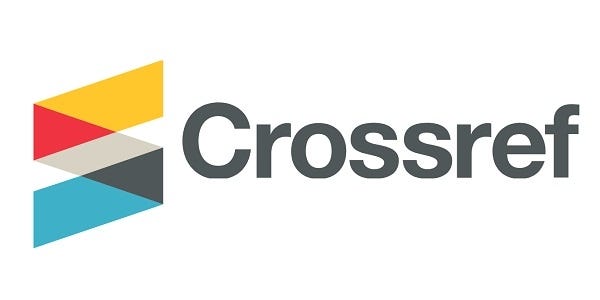A Literature Review on Using the First Language (L1) in the EFL Classroom
DOI:
https://doi.org/10.36663/tatefl.v4i1.489Keywords:
EFL Classroom, Foreign Language, L1Abstract
Among foreign students themselves, the usage of L1 (first language) in the EFL classroom has long drawn attention. It was seen as a challenge to teach the TL without utilizing L1, as it was frequently used in the learning technique to teach other languages. This paper analyzed and emphasized the usage of L1 in classroom instruction in EFL. The literature study was conducted using a review and analysis of around 7 relevant journal publications. The outcome demonstrated how using L1 in the EFL classroom helped to foster a good learning environment. It indicates that students' views regarding the usage of L1 in the EFL classroom were good, as seen by their willingness such as in receiving instructions, understanding difficult topics, learning new vocabularies, and socializing in the classroom. The study result recommends looking into the effect of the use of L1 in the EFL classroom.
Downloads
References
Antón, M., & Dicamilla, F. J. (1999). Socio-cognitive functions of L1 collaborative interaction in the L2 classroom. Modern Language Journal, 83(2), 233–247. https://doi.org/10.1111/0026-7902.00018
Blackman, N. (2014). EFL teachers’ perceptions on the use of L1 in a primary and secondary classroom in Belarus. University of Edinburgh.
Bowen, T. (2013). Teaching approaches: translation as a language learning tool. One Stop English. https://www.onestopenglish.com/methodology-the-world-of-elt/teaching-approaches-translation-as-a-language-learning-tool/146504.article
Debreli, E. (2016). Perceptions of non-native EFL teachers’ on L1 Use in L2 classrooms: Implications for language program development. English Language Teaching, 9(3), 24. https://doi.org/10.5539/elt.v9n3p24
Harmer, J. (2007). The Practice of English Language Teaching. Pearson.
Husain, K. (1995). Assessing the role of translation as a learning strategy in ESL. International Journal of Translation, 1(2), 59–84.
Kayaoğlu, M. N. (2012). The use of mother tongue in foreign language teaching from teachers’ practice and perspective. Pamukkale Üniversitesi Eğitim Fakültesi Dergisi, 32(II), 25–35. https://dergipark.org.tr/en/pub/pauefd/issue/11111/132838
Lee, C. D. (2005). Signifying in the zone of proximal development. In C. D. Lee & P. Smagorinsky (Eds.), Vygotskian perspectives on literacy research: Constructing meaning through collaborative inquiry (pp. 191–225). Cambridge University Press. https://doi.org/10.4324/9780203022214-19
Liao, P. (2006). EFL learners’ beliefs about and strategy use of translation in English learning. RELC Journal, 37(2), 191–215. https://doi.org/10.1177/0033688206067428
Macdonald, C. (1993). Using the target language. Mary Glasgow.
Nurhamidah, N., Fauziati, E., & Supriyadi, S. (2018). Code-switching in EFL classroom: Is it good or bad? Journal of English Education, 3(2), 78–88. https://doi.org/10.31327/jee.v3i2.861
Pan, Y., & Pan, Y. (2010). The use of L1 in the foreign language classroom. Colombian Applied Linguistics Journal, 12(2), 87. https://doi.org/10.14483/22487085.85
Polio, C. G., & Duff, P. A. (1994). Teachers’ language use in university foreign language classrooms: A qualitative analysis of English and target language alternation. Modern Language Journal, 78(3), 313–326. https://doi.org/10.2307/330110
Puspawati, I. (2018). Teachers’ Use of code switching in EFL classroom and its functions. Journal of Foreign Languange Teaching and Learning, 3(1), 73–74. https://doi.org/10.18196/ftl.3128
Shabir, M. (2017). Student-teachers’ beliefs on the use of L1 in EFL classroom: A global perspective. English Language Teaching, 10(4), 45-52. https://doi.org/10.5539/elt.v10n4p45
Snyder, H. (2019). Literature review as a research methodology: An overview and guidelines. Journal of Business Research, 104(March), 333–339. https://doi.org/10.1016/j.jbusres.2019.07.039
Suhayati, L. (2018). Teachers’ attitudes toward the use of L1 in the EFL classroom. Journal of Language Learning and Research (JOLLAR), 1(2), 69–75. https://doi.org/10.22236/jollar.v1i2.3483
Theodosiou, C. G. (2016). Content and language integrated learning (CLIL): An experimental study on CLIL compatibility with the modern Greek educational system. English Review: Journal of English Education, 4(2), 149-160. https://doi.org/10.25134/erjee.v4i2.330
Tsagari, D., & Diakou, C. (2015). Students’ and teachers’ attitudes towards the use of the first language in the EFL state school classrooms. Research Papers in Language Teaching and Learning, 6(1), 86–108.
Ulfah, N. M., Tsuraya, A. S., & Risal, R. (2021). The use of code-switching by English teachers in foreign language classroom. English Language, Linguistics, and Culture International Journal, 1(1), 11-23. https://doi.org/10.24252/elstic-ij.v1i1.22001
Wells, G. (1999). Using L1 to master L2: A response to Anton and DiCamilla’s socio-cognitive functions of L1 collaborative interaction in the L2 classroom. The Modern Language Journal, 83(2), 248–254. https://doi.org/10.1111/0026-7902.00019
Wong, G., Greenhalgh, T., Westhorp, G., Buckingham, J., & Pawson, R. (2013). RAMESES publication standards: Meta-narrative reviews. Journal of Advanced Nursing, 69(5), 987–1004. https://doi.org/10.1111/jan.12092
Downloads
Published
How to Cite
Issue
Section
License
Copyright (c) 2023 I Wayan Ardhi Suantara

This work is licensed under a Creative Commons Attribution 4.0 International License.
License Terms
- Attribution — You must give appropriate credit, provide a link to the license, and indicate if changes were made. You may do so in any reasonable manner, but not in a way that suggests the licensor endorses you or your use.
- ShareAlike — If you remix, transform, or build upon the material, you must distribute your contributions under the same license as the original.
- No additional restrictions — You may not apply legal terms or technological measures that legally restrict others from doing anything the license permits.

















